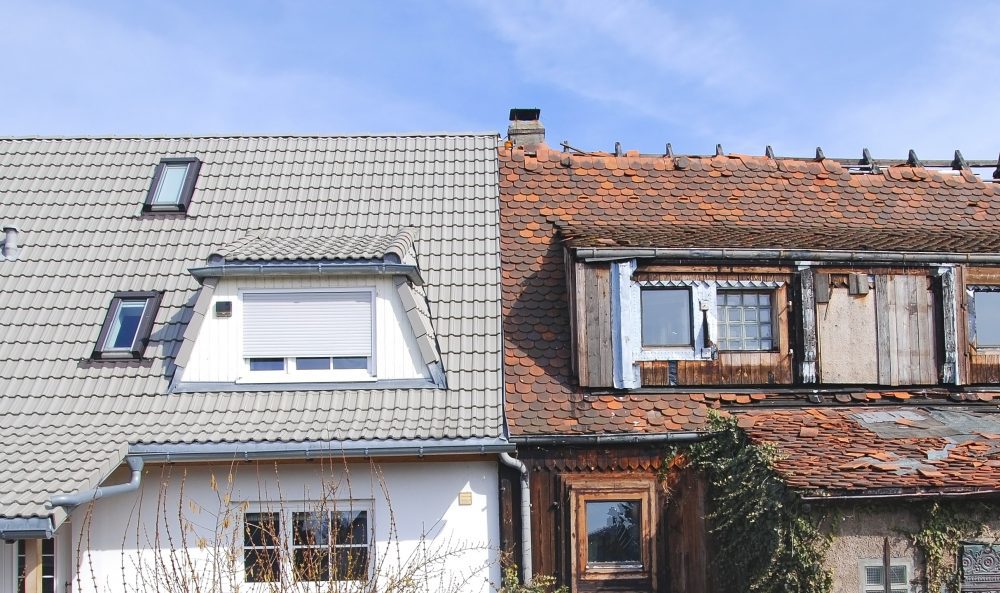This article is part of the Under the Lens series
Moving Community Development Forward
This is an important time for the community development field. Affordable housing, something many community developers work on, is on the national agenda. A huge amount of funding to help slow climate change and address its effects is about to be flowing through community development financial institutions. The frequency of acute disasters—climate, health, infrastructure failure—is increasing without equivalent additional investment in the systems that handle them, meaning the importance of local organizations that have both the resident connections and network and the capacity and expertise to manage the aftereffects is becoming ever more crucial.
But who are these community-based development organizations? What sort of work do they do, where are they getting their funding, and how well is the field in which they are embedded doing at not accidentally reproducing the same harms it was formed to correct?
These are big, important questions, and for a long time the answers have been largely anecdotal.
What Is Community Development?
Beginning in the late 1960s, a movement of community-based organizations sprung up across the U.S. These organizations aimed to address economic development, disinvestment, and community needs in ways that communities had a say in, bringing in investment to places that had little market investment. Since that time these community-based development organizations have taken on many different roles, including affordable housing development, service provision, and advocacy. The conversation about what is and isn’t community development is longstanding and unresolved. We encourage you to join it by sending your definition of “community development,” along with your name and organization, to [email protected] for possible inclusion in a short video.
But recent years have provided a cornucopia of complementary research. Last year the results of the second phase of the Grounding Values in Research project were released. (See our coverage of the first phase here.) This hefty project includes results from an in-depth survey that reached 596 community-based development organizations, with statistical analysis provided by the Urban Institute, a think tank that conducts economic and social policy research, and some special topic briefs highlighting particular findings released this year. (Note: I served as a volunteer on an advisory task force that helped shape the Grounding Values survey.)
Alongside this quantitative research come two qualitative, intensive interview-based projects from ThirdSpace Action Lab. The first, Toward an Anti-Racist Paradigm in Community Development, grew out of interviews with over 80 people with long histories in community development—whether in community-based development organizations (CBDOs) themselves or through the various other types of institutions that make up the field—funders, government, intermediaries, and so forth. The resulting report teases out from these practitioners’ experiences and observations a number of damaging narratives that are prevalent within community development and limit its ability to advance anti-racism, and spells out what different narratives would look like.
ThirdSpace also carried out research on resident perceptions of CBDOs, grounded in dozens of interviews with resident leaders and less-involved residents in the service areas of four different community development groups. The resulting report is called Storied Communities, Community Stories, and we’ve published an excerpt from it in this series.
A massive number-crunching research project looking specifically at CBDOs themselves, field-wide qualitative research, and a deep dive into resident perceptions in four specific localities might seem like they don’t have a ton in common. But one of the many interesting things to come out of all this research is how some of the findings directly reflect each other, providing numbers to go with observations, or potential explanations to wrap around numbers.
I spoke with Frank Woodruff of the Community Opportunity Alliance (formerly NACEDA), which commissioned the Grounding Values and Storied Communities research projects, and Dominique Miller of ThirdSpace, which carried out the Anti-Racist Community Development and Storied Communities, Community Stories projects. We spoke about some of the research highlights and particularly which overlaps jumped out at them, as well as some places where their findings might seem, at first look, to diverge.
There are several instances where Grounding Values data help to disprove some of the problematic narratives that Anti-Racist Community Development teased out.
Leadership Trends
Take for example, the “magic leadership” narrative, which holds that merely having a leader of color will immediately fix anything inequitable about an organization. In reality, the Grounding Values research backed up the perceptions of the ThirdSpace interviewees that organizations with leaders of color are still at a disadvantage when receiving resources, an imbalance that is made even worse because on average they are carrying out a larger variety of services for their communities. Respondents to the Grounding Values census also agreed overwhelmingly (figure 14) with the ThirdSpace findings that leaders of color in the sector need more support—not training, which implies a deficit of skill that isn’t empirically backed up—but support, such as better access to mentors and cohorts of peers.
There’s this thing about wanting to just basically plop leaders of color into these leadership roles. It’s like all of a sudden equity is just going to fall into place in these big, sometimes historically white or predominantly white institutions. But it doesn’t work that way.
Dominique Miller
“There’s this thing about wanting to just basically plop leaders of color into these leadership roles,” says Miller. “It’s like all of a sudden equity is just going to fall into place in these big, sometimes historically white or predominantly white institutions. But it doesn’t work that way. How do you create an enabling environment in these larger organizations . . . so the environment is actually welcoming and a leader of color can actually advance that institution in the right way?”
At first glance the two reports seem to differ on trends in what is actually happening to the diversity of leadership in the field. The Anti-Racist Paradigm report found widespread perception that the field’s leadership is getting less racially diverse. Grounding Values data, compared over time with previous community development surveys, found a steady percentage of leaders of color and a steady average age of 55 (meaning new younger leaders are coming in). People of color filled a third of leadership roles in 2005 and a third today. Miller notes, however, that given the average education level of professionals of color has increased over that time and the percentage of organizations serving communities of color is still significantly higher than the share of leaders of color, then a static percentage is still indicative of a problem.
Scale
Equity and scale were intimately connected for many of the participants in all the research. Woodruff says the Grounding Values results show that despite longstanding debate around and pressure for “scale,” defined as “produce as much as you can, with as few resources as you can,” that’s just not how community-based development organizations operate.
Grounding Values found that the average organization does nine different types of activities with a budget of $3 million, most including a mix of direct services, development, planning, and advocacy or organizing. Organizations focusing on communities with higher proportions of residents of color or that have leaders of color carry out more kinds of activities. “It’s questionable if you can do one thing with $3 million at scale, even the most liberal definition of scale,” says Woodruff. “From my point of view, the average organization, they’ve been pushed to achieve scale from a funder’s definition of scale. They haven’t done it. And I want them to be OK with that. Because that’s not what they were doing. They were trying to be accountable to the communities that they were serving.”
Woodruff says that being clear about this will help the field ask the right questions. Whether community development organizations should be trying to achieve scale or be focused on community accountability is not the point, he says. “They are accountability organizations, that’s what they are. . . Therefore, let’s set up a system that supports them in that effort, because the system is not set up to support them in that way.”
Miller says ThirdSpace’s interviews back up both the idea that the system is not supporting the work that community-based organizations and their constituents most want done and the idea that discussions of “scale” among funders and policy makers typically miss the point. “What we were hearing,” she says, “is pushback on how impact is defined, [on] this idea that bigger inherently means more impact.” For a field that is so strongly based on local representation, local connection, and local solutions, Miller notes, there’s a surprisingly strong set of top-down narratives at work about how solutions, best practices, equity initiatives, and funding should flow. Towards an Anti-Racist Paradigm in Community Development calls this the “sanctity of scale” narrative—the argument that needs are so great that resident control and desires should be subsumed by whatever development can be brought in the fastest and largest.
The implications of this for the structure of the field, and particularly the role of intermediaries, is a matter of some debate. The ThirdSpace interviewees spoke of significant frustration over intermediaries acting as gatekeepers, being interposed into what had been or could have been a direct relationship between a funder and a frontline organization, and skimming off a significant percentage of the available funding for themselves in the process. This was especially galling for longtime leaders of color who reported working with intermediary staff who had far less connection to their communities or experience in the work, or who lacked an explicit anti-racist lens to their approach.
The Grounding Values research, on the other hand, suggested a need for a more robust intermediary structure that would be better able to reach more places. Only slightly more than 20 percent of census respondents got core operating support from intermediaries, and the largest organizations have a far easier time accessing funding, so the report concluded that a larger number of more varied intermediaries could help connect those smaller organizations that struggle to access traditional funding and financing to capital sources that do not themselves have the connections and understanding to fund at a local level. But it should be done in such a way as to support local solutions, not displace them, says Woodruff.
“These bigger institutions have the capacity, they have grant writers, they just have all of those resources to be able to continue to bring in funds and go after funds,” acknowledges Miller. “It’d be interesting to get more insight into what are those intermediaries like for folks that have positive experiences. Is there a particular set of characteristics of those intermediaries?”
Meanwhile, all three reports emphasized that resources are hardest to find for the work that is in many ways most core to community development—supporting residents in taking action for self-determination and in organizing around and implementing changes to the root causes of poor conditions in their communities. At least 60 percent of CBDOs were doing some kind of community organizing work, and advocacy was the top activity that they wanted time and resources to work on, but didn’t have.
While community development is not exempt from the struggles to be more equitable—internally and externally—that face every sector in this country, these reports also show a field that is strong, interested in improvement, and doing a lot of crucial work.
Explore more of the outcomes, recommendations, and follow-up materials from this research: Grounding Values and ThirdSpace research.





Comments